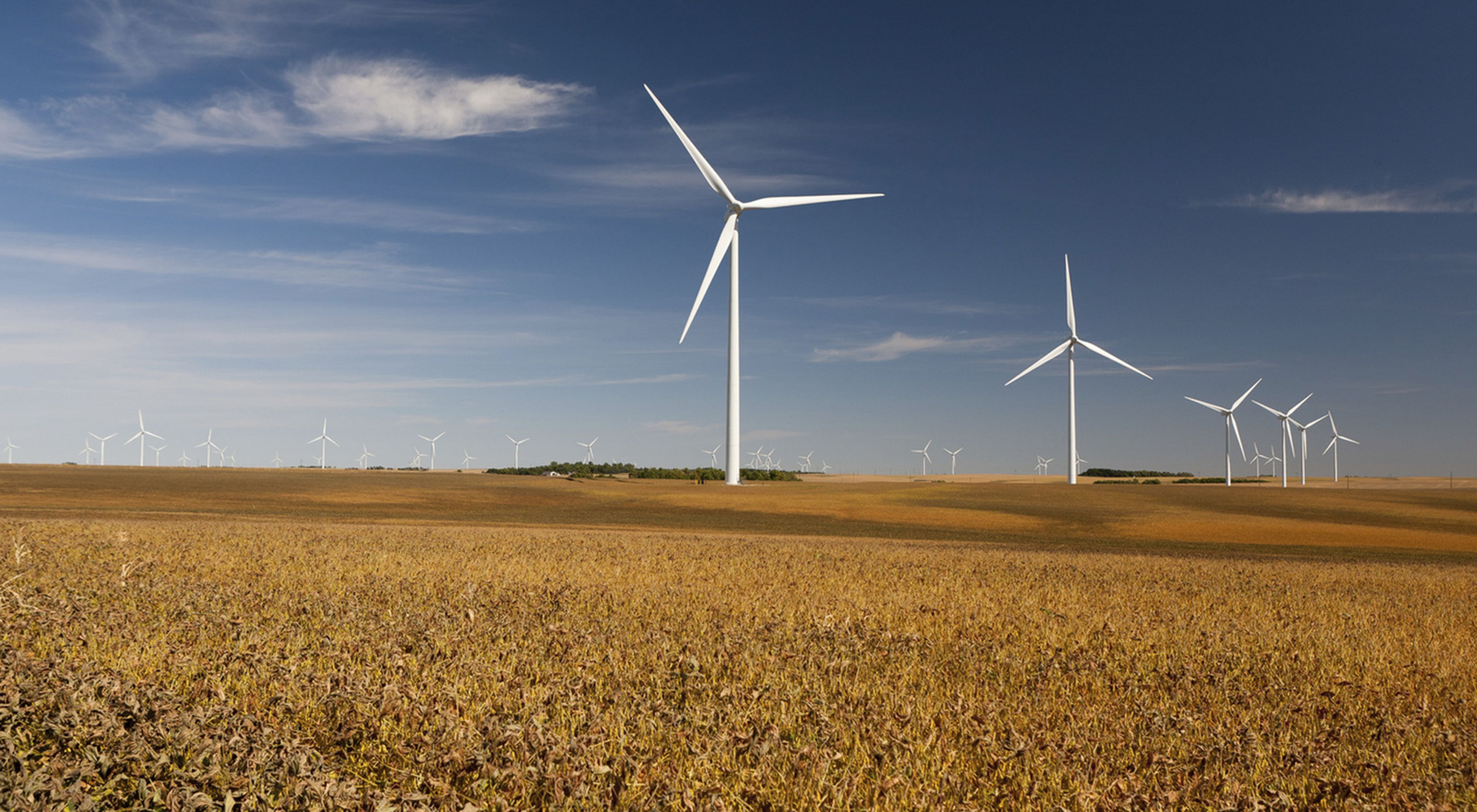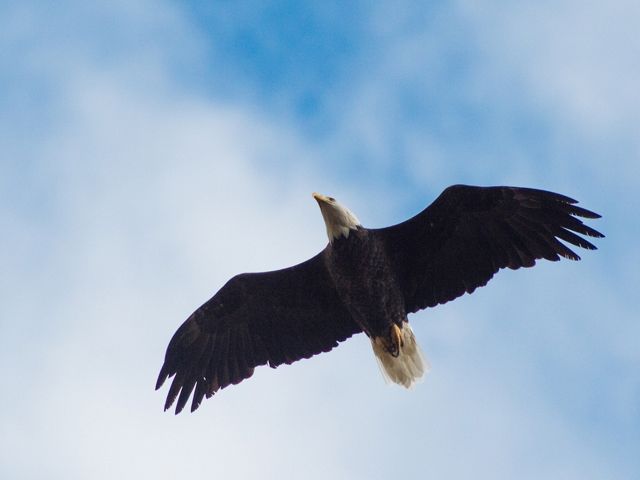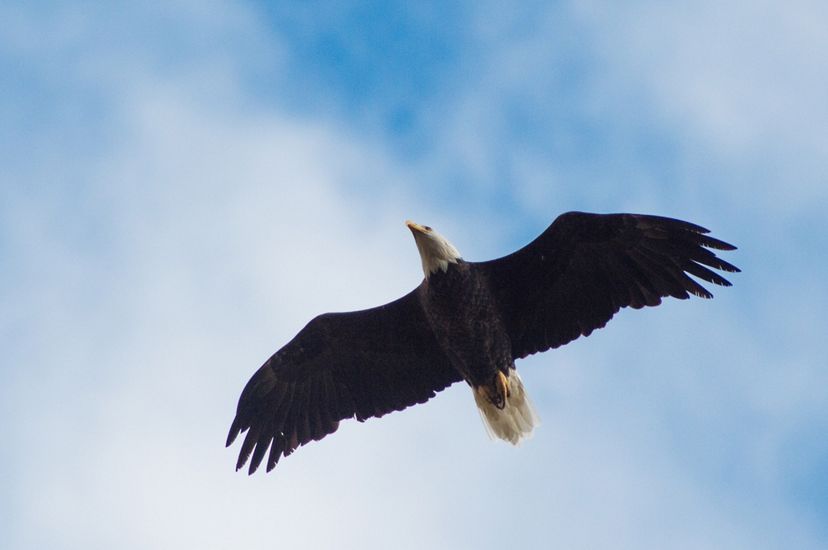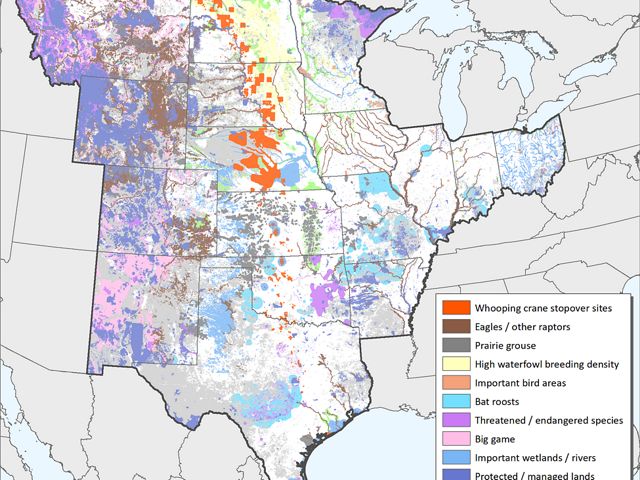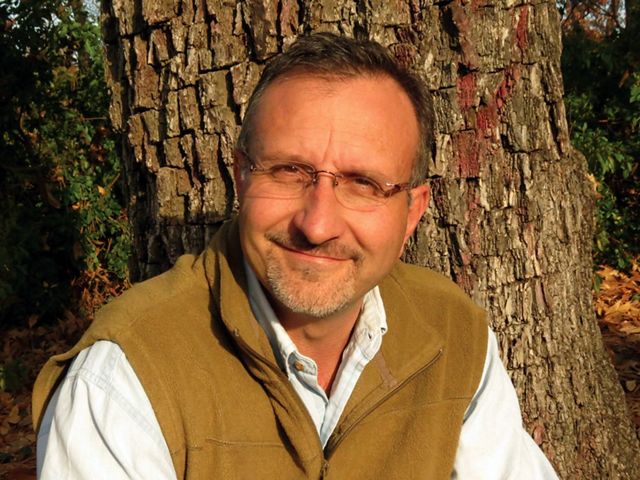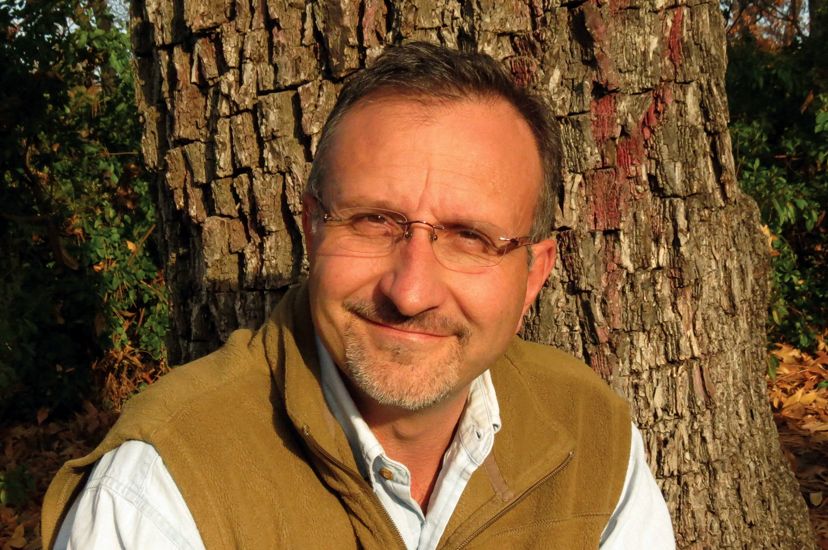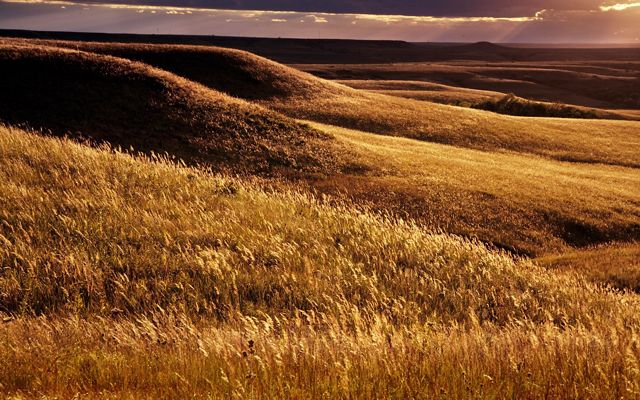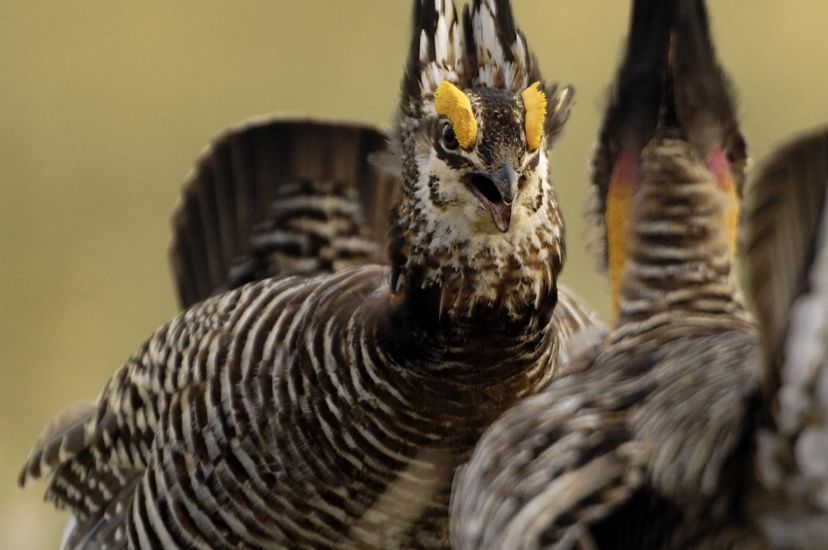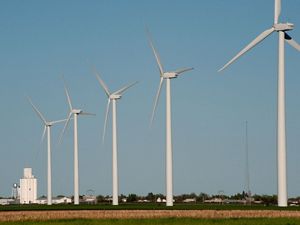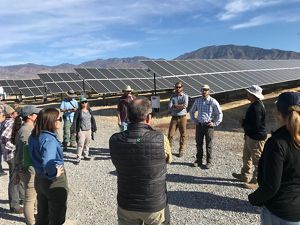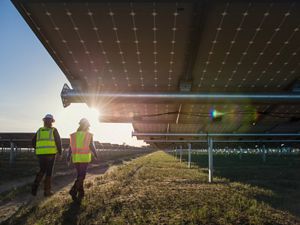Siting Wind Right for Wildlife
By Jon Schwedler, Former Associate Director of Marketing, North America
The Osage Hills sit seventy miles north of Tulsa, home to one of the last remnants of original wild tallgrass prairie in the United States. It is a place where sometimes the only sound you hear is the wind lashing upon the swaying grass, the hawks calling above, and the distant bellows of bison.
To third-generation rancher Ford Drummond, whose property sits in the middle of the Osage Hills, it’s a place one can look out across the prairie and see the past, when it was home to generations of Native Americans stretching back to nearly the last Ice Age.
“You can tell the seasons here by the sky,” he says. “Winter has migrating hawks; in spring we get the turkey vultures.”
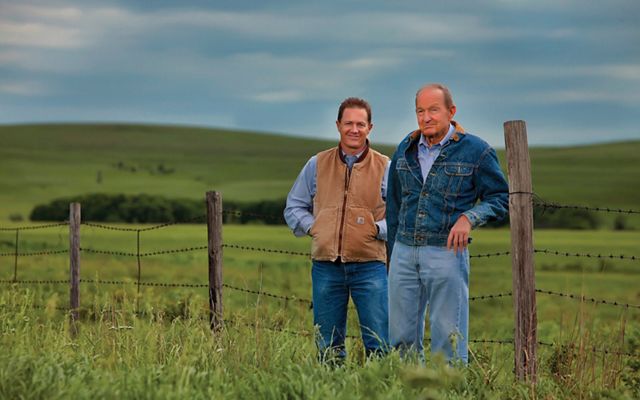
But for ranchers like Drummond, change is in the air. The windy plains of the central United States provide some of the greatest potential for renewable energy in the world. This reality became more evident to Drummond recently, when dozens of wind turbines were erected adjacent to his ranch, each taller than the length of a football field.
“We need renewable energy in this country. It’s an opportunity for clean power. But for everything there is a right and a wrong place, and the last remaining 4 percent of our nation’s tallgrass prairie is not the right place for wind turbines,” he offers.
“We used to have a bald eagle nest on our land. Not anymore.”
A Climate for Solutions
Mike Fuhr is sympathetic to Ford Drummond’s experience. As The Nature Conservancy's Oklahoma state director, Fuhr is a strong supporter of renewable energy because he believes it is a big part of addressing climate change. He knows the Midwest is the country’s “wind belt,” where 80 percent of the nation’s onshore wind energy is being built.
“The science is clear, climate is headed in a tricky direction for the things we care about here in Oklahoma if we don’t make changes,” says Fuhr. “Our wildlife, way of life, and the places we love will be impacted if we don’t get in front of it now.”
He also knows wind turbines in the wrong place can be bad for people, birds, and other wildlife. In fact, previous analysis from TNC found new renewable energy infrastructure could impact up to 76 million acres in the United States, an area the size of Arizona.
It was this recognition that prompted Fuhr and TNC scientists to search for solutions. Two years ago they began work to identify the most promising places for wind power in the central U.S. that avoid conflicts with wildlife.
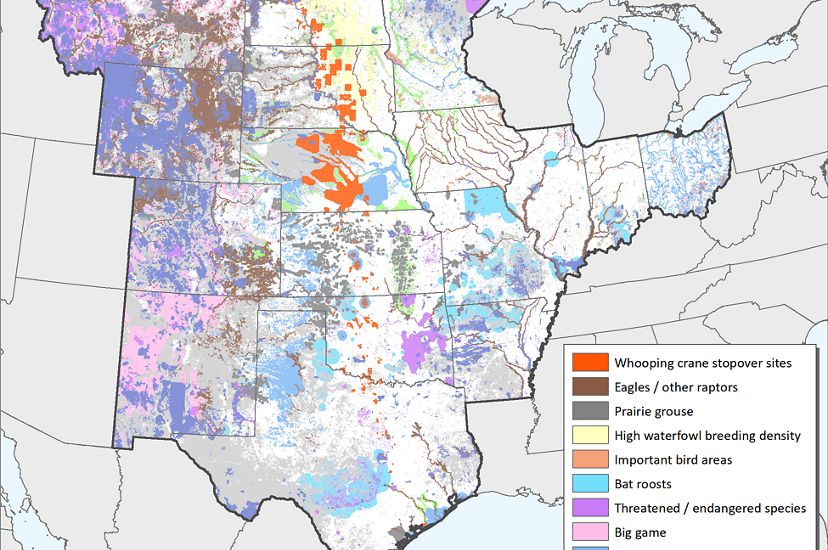
The Site Renewables Right Analysis
The result of that rigorous analysis, now available, is called Site Renewables Right. Pulling together more than 100 sources of data on wind, energy, and wildlife, Site Renewables Right reveals there are 90 million acres in the Central U.S. where wind energy development would not disrupt important wildlife habitat.
What’s more, the analysis discovered a shocking amount of wind energy potential in those low-conflict areas.
“We were thrilled to discover we could generate more than 1,000 gigawatts of wind power in the Central U.S., solely from new projects sited away from important wildlife areas,” Fuhr says.
“That’s a lot of potential energy – comparable to total U.S. electric generation from all sources today.”
Fuhr says this information can be an immediate, free resource for power-purchasers, utilities, state agencies, and other entities that want good information about wind energy siting.
“While advancements in transmission and storage will be needed to fully realize this wind energy potential, it proves we can have both clean power and the lands and wildlife we love. It’s a win-win.”
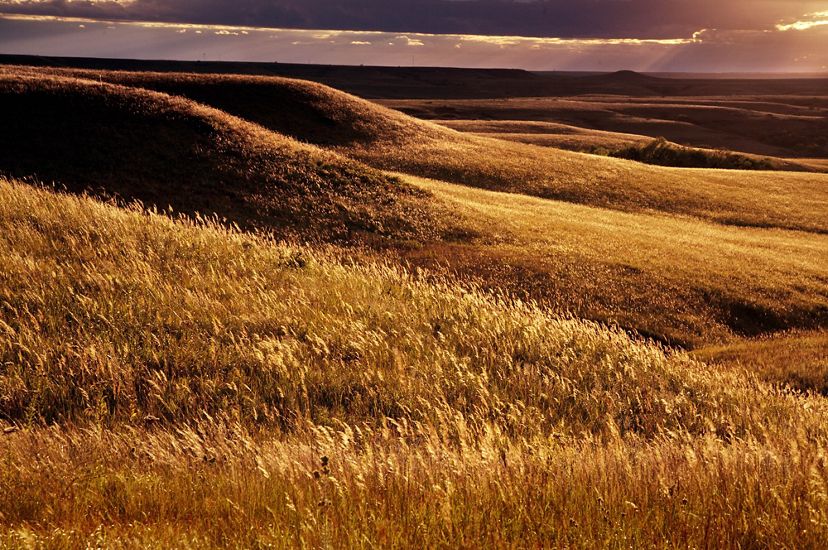
The Business Case for Good Wind Energy Siting
There is no question wind energy will play an outsized role in providing the nation’s power in the future. In many places around the country, the price of wind electricity is already cheaper than coal. Over the last ten years the price of wind power dropped 39 percent, with energy experts projecting that price to fall even further. Wind energy technician was the second-fastest growing job in the nation last year.
To Terry Bassham, chief executive officer for Evergy, these are familiar and welcome trends. As a regional energy company in the Midwest, they stand to source more of their power from wind, and are fans of any resource that helps decrease uncertainty about wind energy development.
“Site Renewables Right is an invaluable resource that helps us avoid unnecessary impacts to the wildlife and iconic landscapes of the Great Plains, while also allowing us to provide clean, low-carbon energy for our customers,” he says.
Other companies in the region are also jumping at the chance to use Site Renewables Right, given the growing recognition of climate challenge – and the hard work it is going to take to find on-the-ground solutions.
Quote: Terry Bassham
Site Renewables Right is an invaluable resource that helps us avoid unnecessary impacts to the wildlife and iconic landscapes of the Great Plains, while also allowing us to provide clean, low-carbon energy for our customers.
The Renewable Energy Buildout Challenge
The ability of Site Renewables Right to balance the dueling challenges of climate change and energy siting threats has also caught the eye of other conservation groups.
“We need more resources like this to speed-up our move away from burning fossil fuels. Well-sited wind energy allows us to meet our climate goals, advances conservation and ensures that we avoid irreversible environmental impacts,” said Katie Umekubo, a senior attorney at Natural Resources Defense Council.
“Climate change is the biggest threat to birds,” explains Garry George, Clean Energy Director for National Audubon Society.
“As we work to keep warming below 2.7 degrees Fahrenheit (1.5 degrees Celsius), we also need to protect the places that birds need now and in the future. Site Wind Rite is a valuable map filled with conservation data for developers to use to evaluate where to site their projects to protect birds and reduce warming.”
Interested in Site Renewables Right? Contact Us.
The Nature Conservancy is looking to expand the use of Site Renewables Right to empower communities and companies so they can take advantage of clean energy. Please contact Nathan Cummins, Great Plains Renewable Energy Strategy Director, at (314) 956-6721 or ncummins@tnc.org, to learn more about Site Renewables Right and what it can do for you.
Next Steps
The Osage Hills are like many other special places in the United States, where American history, nature, and identity come together in an irreplaceable way. In Wyoming it’s the Shirley Basin, where pronghorn gallop across the high sagebrush; in Nebraska it’s the Sandhills, where their namesake Sandhill Cranes gather during migration; in neighboring Kansas it’s the Flint Hills, where Greater prairie chickens dance to attract mates.
Mike Fuhr believes Site Renewables Right can help us keep all of these places intact, and have clean wind development to power our nation.
Ford Drummond agrees.
“I am a strong supporter of Site Renewables Right,” says Drummond. “I think if it had been available earlier, we would have had a better outcome for my ranch and the tallgrass prairie.”
